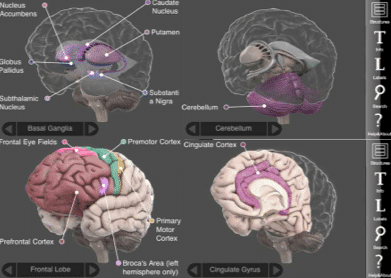Good brain-related videos: Mono-tasking, mind wandering, and the brain as a network
“Ned the Neuron” and “Your Fantastic Elastic brain”: Let’s educate our children about their brains and brain fitness.
 Just in time for holiday shopping—some educational materials to help children learn more about their brains and brain fitness.
Just in time for holiday shopping—some educational materials to help children learn more about their brains and brain fitness.
I believe that children should be taught, at an appropriate level with engaging media, to understand important concepts about their brains and learning. If you are a parent, educator, or therapist who wants to teach children information that will allow them to better understand themselves and empower their thinking (how they can control and modify their minds and behavior; a Growth Mindset), it is nice to know that a variety of groups have recently developed engaging books, videos and apps regarding the human brain and brain training or plasticity. I recently discovered two sources of material that are worth attention.
The Adventures of Ned the Neuron is a free iPad app. This well constructed app is 34 full color pages of material.
“I think therefore IM” powerPoint slides available for viewing
Interactive Metronome Intervention Research
LATEST GROUNDBREAKING RESEARCH: Another study reports positive impact of IM on reading achievement…
I Think – Therefore IM: The Time Doc2 gets prepared for IM keynote
Is the P-FIT it? Part 1: The P-FIT model described
The law of individual differences is the only proven law in psychology. This law has resulted in decades of research regarding theories and models of intelligence and individual differences in intelligence. Within the past two decades a general consensus has emerged from the psychometric intelligence research that the Cattell-Horn-Carroll (CHC) theory of intelligenceis the most empirically supported taxonomy for understanding the structure of human intelligence.
[Note – this is the first in a series of posts intended to present an integration of intelligence, cognitive neuroscience, and applied neuroscience research with the goal to advance a set of hypotheses or model(s) that explain how the Interactive Metronome ® (IM) technology results in improved cognitive functioning specifically focus or controlled attention]
IM-Home blog posts by Dr. Kevin McGrew (Volume 1: 6-3-12)
The Original Time Doctor and Time Machine: Jim Cassily

Jim Cassily was the inventor of the patented technology behind Interactive Metronome ®. Through a serendipitous set of events I recently learned about the early days of his development of the original “time machine.”The purpose of this post is to share a portion of Jim Cassily’s role in the IM story. I give special thanks to Jim’s wife, Katie, who has graciously supplied me with original documents, pictures, and anecdotes regarding Jim’s passion for sharing the technology he developed to improve the lives of others. I consider it an honor to amplify a portion of Jim’s legacy via efforts to share information regarding the brain-based mechanisms involved in the IM neurotechnology .



